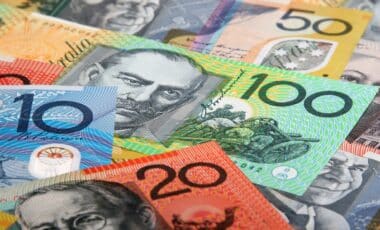Australia’s economic growth has slowed significantly in the first quarter of 2025, prompting economists to predict further interest rate cuts by the Reserve Bank of Australia (RBA). The latest GDP figures show a mere 0.2% increase in the first three months of the year, down from previous expectations.
Despite this subdued performance, Australia’s savings rate has climbed, suggesting that households may soon be in a position to spend more, potentially boosting economic activity in the future.
According to the Australian Bureau of Statistics (ABS), the nation’s GDP grew by just 1.3% in the year leading to March 31, 2025, well below the expected 1.5%. This lacklustre performance comes amid strong population growth, which has outpaced the nation’s economic output, leading to a 0.2% decline in GDP per capita.
The news highlights a deeper, longer-term issue, with Australia’s economic growth failing to match population expansion for nine of the last 11 quarters.
The Case for Lower Interest Rates
The RBA has already lowered interest rates twice in 2025, bringing the cash rate to 3.85%. According to financial market traders, the likelihood of further cuts is high, with many expecting another 0.25% reduction as soon as July.
This expectation stems from the fact that growth remains weak across key areas, including household spending and private investment. Notably, government spending has stagnated, marking the largest drag on growth since 2017, according to Katherine Keenan, head of national accounts at the ABS.
Despite these economic challenges, there is some positive news: incomes are continuing to rise, with wages, business profits, and rents all growing faster than inflation. This has led to an improvement in household savings.
After reaching a historic low of 1.5% in September 2023, the household savings rate rebounded to 5.2% by March 2025. This increase offers hope that, as the cost of borrowing continues to fall, Australians may begin to spend more, contributing to a recovery in economic activity.
A Global Context and Domestic Uncertainty
While Australia’s economic situation presents some immediate challenges, the global economic environment is not helping. International trade uncertainties, particularly with the U.S. and China, have dampened global growth forecasts.
According to the OECD, the global economy is expected to grow by just 2.9% this year, down from previous predictions of 3.1%. This external uncertainty compounds domestic challenges, including slow productivity growth and rising living costs.
Furthermore, Australia’s weak productivity growth remains a concern. Measures of productivity were flat for the second consecutive quarter, a signal that output per hour worked has not improved significantly.
This situation, combined with high inflationary pressures, suggests that the government and the RBA must take action to stimulate demand.









